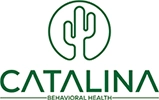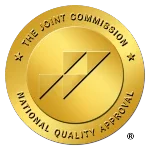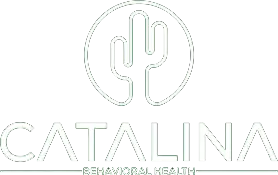Personalized Treatment Maps to Promote Client Success
When you think of substance abuse treatment, what comes to your mind as the most important part of the process?
Some people might say detox – some might say the therapists. Others might say the medication is used for medication-assisted treatment. Or maybe you’d assume that it’s the environment assembled during inpatient treatment.
And while all these are certainly vital spokes on the wheel of recovery, they’re only a part of what actually makes up the most important dynamic of the treatment planning process. The most integral part of all substance abuse programs is the substance abuse treatment plan.
For those unfamiliar, this is arguably what makes or breaks the successes of each client who undergoes therapy at any given mental health or substance abuse treatment facility. At Catalina Behavioral Health, we pride ourselves on crafting evidence-based treatment interventions and effective planning for every client who walks through our doors.
Keep reading, and in this article, you will learn about the substance abuse treatment plan, what it consists of, how they’re crafted, and why they’re so important to the clients who receive them.
24 Hour Substance Abuse Treatment Helpline
What Is a Personalized Substance Abuse Treatment Plan?
A substance abuse treatment plan outlines the specifics of the treatment for the individual receiving treatment for mental health or substance abuse issues. This plan is made up of several different segments, outlining each specific area of importance that plays out during recovery.
The substance abuse treatment plan is catered to each client personally and adheres to their specific needs and requirements – also incorporating the goals and objectives they have for themselves before, during, and after treatment.
In fact, the list of goals established is one of the more critical parts of the addiction treatment process, as it helps to keep focus and lay out the specific path the client must walk. Walking this path means achieving the ultimate goal of long-term recovery.
So how is this path established? Let’s take a look at some of the most important elements of the substance abuse treatment plan.
The Building Blocks of the Substance Abuse Treatment Plan

So, what specific elements are outlined during the substance abuse treatment plan meeting with therapists and specialists during the planning stage?
The substance abuse treatment plan will outline the following during your time at our mental health and rehab facility:
Your Need for Medical Detox
Do you need medically assisted detox during your substance abuse treatment? During the beginning stages of any substance abuse treatment plan, it must be fully understood and established whether a client requires medically assisted detox. Why is this form of substance use assessment so important?
When you suddenly refrain from using any addictive substance like drugs or alcohol, for example, it doesn’t take long until your body begins to experience withdrawal symptoms from detox. These withdrawal symptoms are typically the most dreaded part of recovery, as they can last for days and bring extreme discomfort.
Normally, drugs like heroin, fentanyl, opioid painkillers, benzos, and alcohol require medical detox. This doesn’t rule out the possibility of participating in the event of a separate drug addiction, as we would never deny anyone the addiction treatment that they request.
However, the substances mentioned above tend to bring the most severe level of physical withdrawal when compared to other substances.
The Severity of Addiction and Substance Use History
The next most important piece of information is establishing the severity of your addiction. How long have you been abusing your drug of choice? How often do you use it? In what amounts are you using the said drug? Do you mix it with anything else?
The answers to all of these questions must be established to begin crafting the objectives and specifics of your substance abuse treatment plan. No two substance abuse treatment plan is exactly like another, so being as specific as possible is important.
The State of Your Mental Health
During your admissions process when establishing the specifics of your substance abuse treatment plan, it’s vital that your admissions specialist or therapist team has an accurate gauge regarding the state of your mental health issues. Why is this important?
Well, for starters, we need to feel confident about your current mental health situation when you check-in. We don’t expect you to be in a perfect state of mind, but you shouldn’t have any feelings of wanting to hurt yourself or others.
Diagnosing Underlying Mental Health Issues Effectively

By obtaining an accurate reading of your mental state, professionals can begin to establish whether you might require a dual diagnosis for a co-occurring disorder. This is when you have a substance abuse disorder combined with another form of behavioral or emotional challenge. This might include anything from bipolar disorder, anxiety, depression, and even eating disorders.
We are finding more and more often that clients who enter substance abuse treatment do end up with underlying issues at the center of their addiction issues.
Establishing this is critical, as treating the addiction without treating the underlying mental health challenges will likely lead to a relapse in the future, as one drives the other in an endless revolving door of poor mental health.
Get Detox and Rehab Help at Catalina Now!
Existing Support Structure for Sobriety
What, or who do you use as your support structure outside of substance abuse treatment? This is a significant question that deserves a thoughtful and honest answer, as this is the first dynamic that directly impacts your aftercare and long-term recovery.
Do you have family members who are prepared to assist you and provide support after you graduate inpatient treatment? Are they willing to get involved with your substance abuse treatment plan?
The Importance of Support Groups to Prevent Relapse
Can you count on them to help encourage you and help you maintain sobriety at points when you feel triggered? All of these things are required of people that make up your support structure. This needs to be established in the early stages and not at the last minute.
Now that you understand the things that are highlighted while crafting your treatment plan, let’s take a look at how exactly we craft the treatment plan based on the relevant information we receive during the interview session described above.
Putting Together the Treatment Plan for Substance Abuse Treatment

After compiling all of the information outlined above, the actual plan can begin to take shape and slowly form a plan that caters to your situation specifically.
Let’s take a look at how the final stage of the treatment plan comes together.
To Detox or Not to Detox?
As mentioned above, the first step in forming your substance abuse treatment plan is to decide whether you’ll attend medically assisted detoxification. If you’re uncertain about your ability to navigate the detoxification process without the help of medical staff, the best way to start your journey is with medically assisted detox.
Professional staff will be available 24/7. begin your treatment plan while allowing the substance to safely exit your system. Medication is available to help you remain somewhat comfortable. You’ll also have a diet plan that’s accommodating to the stomach pain experienced during detox.
Selecting Your Specific Level of Care for Substance Abuse Treatment
The second step of your treatment plan and recovery process (the first step if you didn’t opt for medical detox). During this step, you’ll select from several treatment plans, including inpatient therapy for drug use and alcohol abuse, an outpatient recovery process, intensive outpatient, or partial hospitalization.
Ultimately, the severity of your addiction combined with your ability to reside at a rehab facility during the treatment process dictates this step. For more severe addiction challenges, it’s recommended that you complete the full inpatient substance abuse program. This is a more robust program, and certainly more intensive.
Treatment Plans and the Right Level of Care for Each Client
In some cases, not everyone can take up residency at our facility for 30 days. If this is the case, and you have obligations for work or family, an outpatient treatment plan for drug and alcohol use is probably your best bet.
Technically, partial hospitalization is considered outpatient, so you’ll have to weigh which level of outpatient treatment programs works better for you.
After this, you can begin crafting the specifics of your substance abuse treatment plan with your counselors. This includes your schedule and specific forms of therapy you’ll be participating in.
The Healing Portion of Your Substance Abuse Treatment Plan

After selecting the framework from which you’ll receive your treatment, you can begin to piece together the specifics and scheduling. At Catalina Behavioral Health, options for this step include:
- Cognitive behavioral therapy
- Trauma-informed therapy
- Dialectical behavioral therapy
- Holistic forms of therapy
- Group therapy
- Family therapy
- and more
Ultimately, the specific form of behavioral therapy or otherwise depends heavily on addressing the mental health disorders that exist at the center of your drug abuse challenges. Substance use disorders are complicated by mental health disorders and vice-versa, so it’s important to treat them both equally at the same time – otherwise, you run the risk of one resurfacing in a short period.
Normally behavioral therapies combined with some form of individualized group therapy, and potentially holistic healing options end up taking up the brunt of your schedule. This is where the majority of your healing takes place as you learn about triggers and negative emotions that lead to substance use disorder.
After these are set, we’ll begin talking about your relapse prevention plans and aftercare options.
Aftercare and Ongoing Support for Recovery Success
Your aftercare plan consists of the formation of your support system, in addition to identifying ongoing support through additional meetings or therapy to help you maintain and hit your treatment goals. This includes:
- Finding counseling outside of the recovery center
- Locating AA or NA meetings for ongoing support
- Create a plan with your family to help them take a more proactive approach to a healthier lifestyle and attention to post-treatment goals
- Continuing to monitor the client’s progress is important for the treatment facility. This can happen in multiple ways, including the adoption of alumni programs to help clients stay connected with peers from treatment and become standup members of the community.
Following Through With Your Personal Treatment Goals
The most important part of crafting a personal treatment plan is remembering to set realistic goals. If you set your goals too high, you’ll consistently fall short which can be discouraging. However, setting yourself up to hit small, obtainable goals can quickly boost morale, allowing you to thrive during recovery and also helping you maintain a positive outlook on life.
It’s also vital that you give yourself credit for even accomplishing the smallest of steps. It took courage to get to this point, and change doesn’t happen overnight. Reward yourself when you accomplish your treatment goals and continue to push forward.
Get a Proven Substance Abuse Treatment Plan at Catalina

Catalina Behavioral Health can help you accomplish all of your treatment goals, allowing you to overcome your substance abuse challenges and return to a normal way of living.
For more information on everything we provide our clients, contact our admissions department so we can help you get started.
Up to 100% of Costs Covered by Insurance – Call Now!
FAQs On Substance Abuse Treatment Plans
Can I make changes to my personalized treatment plan?
Yes, absolutely. Truthfully, you most likely will end up making some type of revision to your treatment plan. Sometimes the methods of therapy we choose initially aren’t always the most ideal for you – maybe you’ll be more receptive to an alternative form.
It can be a trial-and-error dynamic, and we’ll continue to revise it until we find a formula that works. Don’t get discouraged if the first treatment plan we create doesn’t end up sticking and we have to make some changes.
Does my treatment plan continue after rehab?
Yes. Technically, your aftercare plan is part of your personalized treatment plan. How you continue to carry yourself and maintain your sobriety is critical after you complete rehab. You won’t have 24-hour supervision, so the attention to your aftercare plan is one of the most critical dynamics of rehab.
In fact, we encourage you to continue to make changes as you hit benchmarks and discover new treatments, outlets, and aftercare plans that work and don’t work as time continues after your inpatient therapy.
What if I relapse?
Relapse is an integral part of recovery – keep that in mind. Hardly anybody makes it through recovery without experiencing some form of relapse – whether it’s mental or physical.
It’s important not to judge yourself on how many times you slip up – but how you react and bounce back from these experiences that matter the most. Keep your head up, and bounce back better each time with a new lesson learned.




